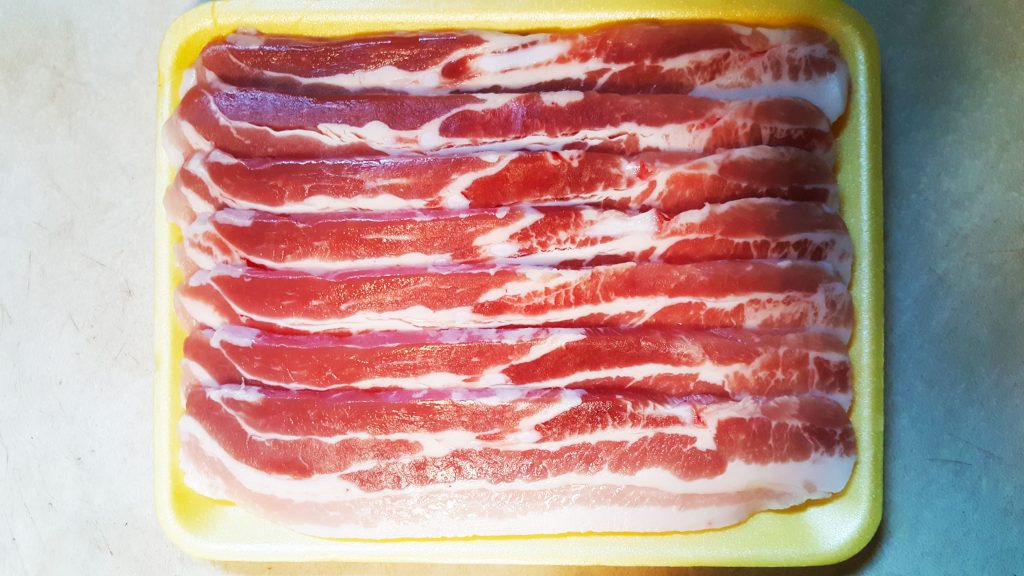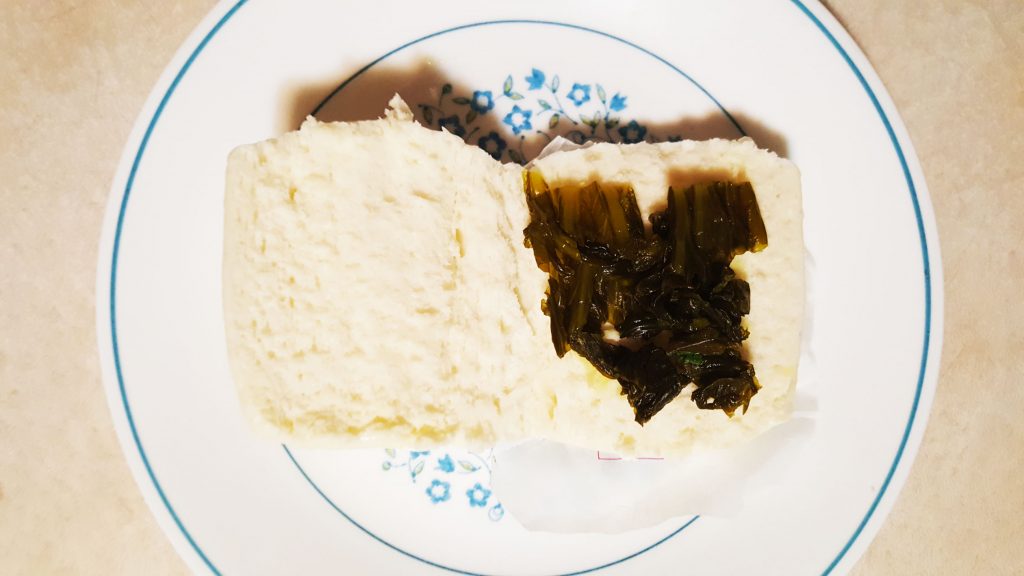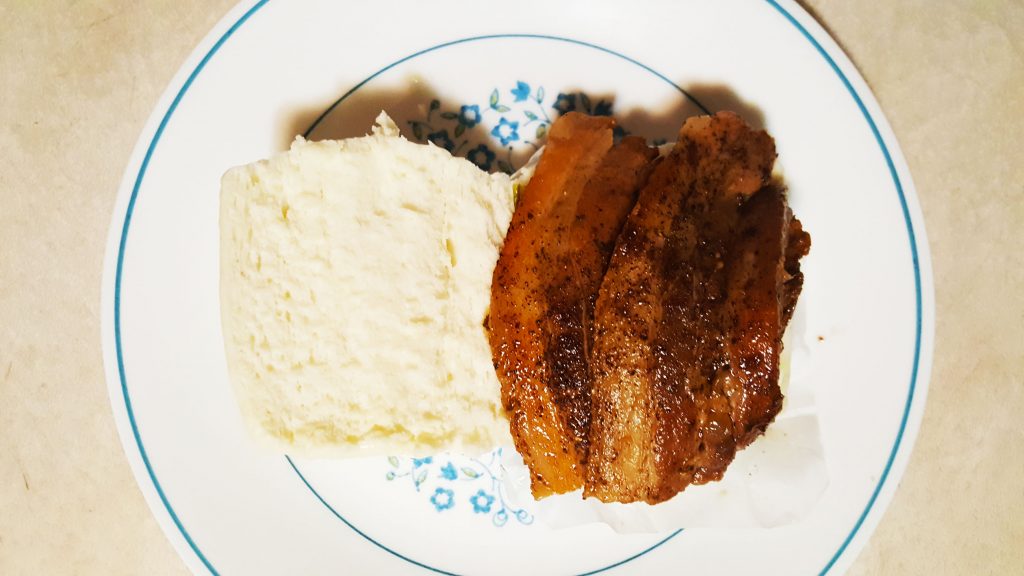Gua Bao
Gua Bao is a Taiwanese slider.
That might sound flippant, but it’s essentially true. Sliders consist of a small burger patty, steamed along with its bun over aromatic onions and served with pickles. Gua bao consists of soft pork belly, aromatically braised and served in a steamed bun garnished with various pickles, veg, etc. The similarities are pretty clear, but the end result is a much different experience.
There’s a fast casual chain in the Chicago area that serves this type of thing called Wow Bao. They do potstickers, stuffed steamed bao, noodle salads and the like, but their buns are very close to gua bao. There are 3 flavors, and I tried all 3 recently.
The Szechuan Beef bun is a vaguely Asian sloppy joe with carrots, daikon, and chives in a steamed bun. It’s tasty enough but I’m not entirely certain what makes it Szechuan.
The Sriracha Chicken bun consists of a seasoned ground chicken patty with Sriracha sauce, carrots, daikon, cucumber, scallions, and cilantro on a steamed bun. The garnishes are quite like those of a banh mi, without the bite of the jalapeno, and though the Sriracha went some way toward making up for that lack, a steamed bun is not an apples-to-apples comparison with a light crusty Vietnamese demibaguette.
The Glazed Pork Belly bun from Wow Bao is the closest to what I was expecting from Gua Bao–I believe the pork belly is likely baked rather than braised, then glazed with hoisin sauce. It’s tasty for all that though, and with the same daikon/carrot/cucumber/cilantro combination as the Sriracha Chicken bun, it’s a refreshing combination.
There’s an actual Taiwanese restaurant in the River North area of Chicago serving gua bao that I thought I’d try as well, but since it was getting toward the end of the month, I decided to jump in and try making one myself. A quick google search led me to a tasty-looking recipe on usual suspect Serious Eats, and a trip to the northwest side for my cousin’s son’s baptism last weekend gave me a golden opportunity to stop by Korean market Joong Boo to look for Asian ingredients.
Joong Boo sells a variety of sliced meats for galbi, bulgogi, etc., and this pork belly was around 1/4″ thick, perfect for the purpose.
According to the Serious Eats recipe, the pork belly gets cooked long enough to crisp up the edges in a pan, and its fat is then used to saute aromatics (garlic, ginger) before deglazing with rice wine, soy sauce, water, and more aromatics. The pork is then simmered in this liquid for at least an hour.
In addition to this pork belly, I was able to acquire frozen Taiwanese buns–thick buns that would need to be sliced open, rather than the flatter type used by Wow Bao or in a Beijing Duck service, but they fit the bill and took less time than making buns from scratch would have–and some pickled mustard greens, an exotic garnish for this sandwich called for in the Serious Eats recipe.
When the pork was almost ready, I steamed the buns in my big tamale pot for 5-6 minutes, then sliced one open.
I first added some chopped mustard greens
then a couple slices of the pork belly
crushed roasted peanuts mixed with brown sugar, and chopped cilantro
I folded the top back over and served it with a little hoisin on the side, in case it needed something a little extra.
It really didn’t. I do like hoisin sauce though.
The soft, springy, slightly sweet bun molded itself around the perfectly tender pork belly, loaded with flavor from its braising liquid. The peanuts and cilantro were appreciated, but the sour hit from the pickled mustard greens was an absolutely essential counterpoint to the sweetness of the bun and peanut mixture, and the savory, soft, and aromatic pork. It was really an excellent sandwich, and I liked it so much that I made more the next day.
I wish I could spend another week exploring this sandwich, but not only is all this rich fatty pork belly not doing my health any favors, tomorrow is the end of June. Soon there will be three more sandwiches for us to explore. Thanks for reading!

I like sandwiches.
I like a lot of other things too but sandwiches are pretty great






















The pickled mustard green you got for this sandwich is the most important condiment in Chinese cooking. Its use is so ubiquitous (and official record-keeping so bad) that Chinese social scientists use the rates of pickled mustard green consumption as a way to estimate the size of the population in an urban area. The next time you get Chinese take-out or have similar fried food, do what the Chinese do when they eat fried food and have a cup of broth on the side: slice the mustard green, rinse it if it is very salty (as they often are), heat a small pot, fry the mustard green lightly in a neutral oil for 30 seconds, then add a cup or two of stock to the pot, and season lightly. Have a small cup of this next to your meal to cut through the oiliness. This is the base for everything from noodle soup to egg drop soup.
Of course my comment is only two years late! If you have some of the mustard green left, it’ll still be good though!
I will have to buy some more pickled mustard greens just to try this!